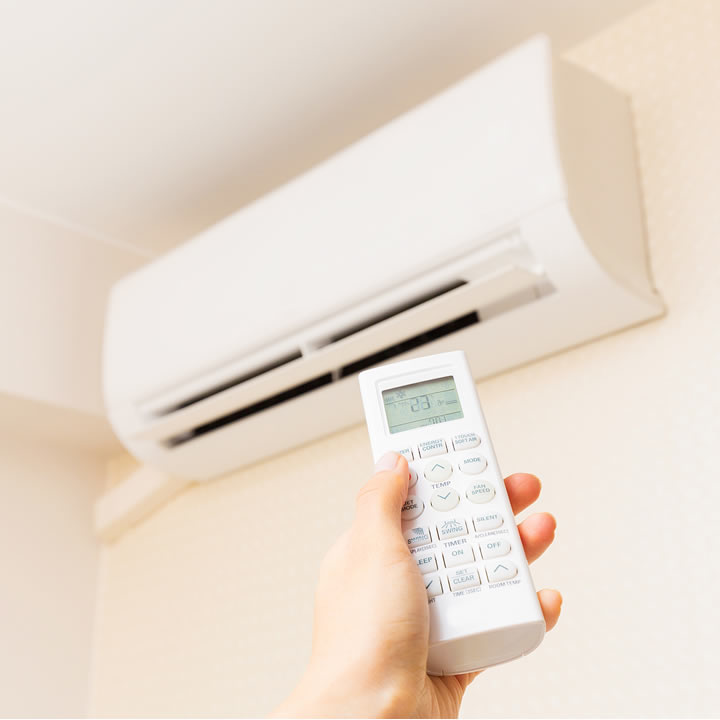Humidity or perspiration in the air conditioning unit ductwork is a typical issue. If it happens long term, it can cause a variety of problems with your air conditioner.
Water droplets accumulating on the exterior of your air conditioner’s ducts and outlet holes are common signs of moisture. In severe instances, it might even form tiny water puddles on the ground. Thankfully, there are useful references that understand how to mitigate these situations.
The thermal gradient between the AC outlet and the air outside poorly closed AC vents and insulation surrounding ducting can cause dampness or condensation at the AC duct system.
Ductwork perspiration can be exacerbated by a variety of causes, including:
- Presence of too much moisture in the air
- Dirty filters
- Clogging on the ducts can make ductwork susceptible to sweat
Why Condensation in AC Ducts Is A Concern
Damages caused by water are the most severe issues connected with ducting condensation. Further, condensation can cause severe harm to surround materials like brickwork, gypsum, and wood over time. Each year, total expenses incurred on water damages, repairs, and remediation in the U.S. is around $13 billion. Moreover, 14,000 people in the United States are affected by water damages each day.
These alarming statistics connected to water damages call for individuals to evaluate their ducts critically and repair them before the risk of condensation becomes aggravated. Thankfully, there are answers to this widespread issue. You can implement these useful references under the supervision of a professional duct cleaner to save your resources in the long run.
Why Is Water Leaking From The Ductwork?
Moisture drips from the ducting of your air conditioner due to clogged condensate drains. A condensate drainage system gathers moisture from the atmosphere and gets rid of it via drainage. In cases where there’s water leakage, it can be triggered by a variety of factors, including;
- When the condensate tubes are clogged with algae, minerals, or dirt, it can trigger water leakage
- In cases where your home’s evaporator coil, which freezes in cold weather, begins to defrost, leakages are bound to happen
- When your drip tray has a leakage
Will Extreme Insulation Cause Condensation?
Excessive insulation might lead to moisture. When insulation is done in extremes, it will keep your residences inside warmer. Warm air tends to contain more dampness; this makes the interior of a structure damper. On the other hand, temperature fluctuations will cause the temperature within your structure to drop down at night. As a consequence, the air within cools and releases humidity, resulting in moisture.
Use Of Ducting To Prevent Condensation
You can effectively avoid condensation by sealing your AC ducting. The inside layer of ductwork wrap is an insulation made from foam, while the outermost part is foil. Ensure that it is neatly wrapped around your air conditioning duct. Also, secure it with ducting at the connections.
Other Ways To Stop Condensation On The Air Conditioner
With sweating air conditioner ducts, you can consider implementing some alternatives to mitigate the situation. Below are a few tips that you can use to prevent condensation in air vents:
Suppose your ducts are all metallic, ensure that you double-check that they’re perfectly wrapped. Use fiberglass alongside other insulation materials for the ducting instead of metals. Fill holes, gaps, cracks to assess critically, or other openings that allow external air to get into your house.
Insulating is an effective technique to keep your ducting at consistent temperatures. In some situations, your insulation may not fit in the conduit of your basement.
Decrease the moisture levels around the ventilation ducts as much as possible. In case you want to decrease the moisture, employ the use of a dehumidifier. In humid regions, dehumidifiers are an excellent technique to lower the humidity in the atmosphere by removing water from it. As a result, dust mites or mold won’t develop in such an environment. They’re especially beneficial in wet cellars and other areas of your property where humidity gathers.
Ensure that any ducts obstructing airflow are unblocked and serviced on a regular schedule. An obstruction in the sweating ducts could explain the explanation. As such, cooler air collects whenever air is obstructed in specific regions, lowering the temperature of your vent. Consequently, it starts sweating. Ensure that you clean your ducts every 3-4 years, as NADCA (National Air Duct Cleaners Association) recommended.
Clear your home air filtration system regularly and replace them after 90 days.
Fix any leaky ducts to prevent the extent of their distraction and avoid the situation early. This way, you can save money that you would have spent on doing costly repairs.

